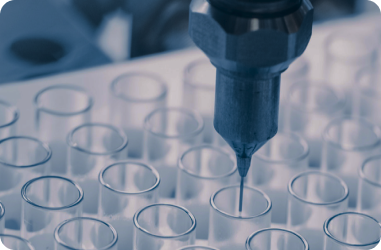Decontamination (also known as bio-decontamination) is the process of removing harmful microorganisms, creating conditions suitable to ensure facility and product integrity that is widely used in industries such as pharmaceutical manufacturing and medicinal research.
Effective bio-decontamination supports compliance with GMP standards and regulations such as GMP Annex 1 and ISO 11.080, safeguards staff, ensures research accuracy and helps to preserve product quality. Without proper decontamination process and checks, there’s a risk of unsafe medicines, compromised experiments and regulatory non-compliance, making it a critical part of operations.
Protak Scientific produces Enzyme Indicators, a diagnostic tool used for the effective monitoring of bio-decontamination efficacy. The indicators may be used to show equivalency with Biological Indicators, to test bio-decontamination validation success or failure within 60 seconds. This allows many large-scale pharmaceutical manufacturers to quickly change and test the sanitisation system and drastically optimise the validation process via reduced downtime and increased cycle efficiency.
| Biological Indicators | Enzyme Indicators | |
| Time for results | > 7 days | 60 seconds |
| Data available | Binary | Quantitive values |
| Variation | -50-300% | < 15% |
| Source | Bacterial Spores | Enzymes |
| Behavior | Viable | Non-viable |
Enzyme Indicators offer a range of advantages over traditional Biological Indicators for bio-decontamination validation. One of the major benefits is Enzyme Indicators’ ability to provide clear, quantifiable results in seconds rather than days. This means users can have full confidence in the effectiveness of their bio-decontamination processes, which in turn leads to improved efficiency and reduced costs for these critical activities.
Traditional Biological Indicators require a seven-day or more incubation period before they can provide a result as to whether a gaseous bio-decontamination process has failed. By contrast, Enzyme Indicators give answers in just 60 seconds. This helps to achieve faster quantitative results with a higher degree of accuracy and drives down costs through reductions in overheads, all while continuing to safeguard product integrity.
Because Enzyme Indicators offer detailed, quantifiable data as opposed to the binary pass/fail information Biological Indicators deliver, this allows users to create data on their activities using the Athena software. In turn, this data can be used to identify areas for bio-decontamination cycle improvement.
Enzyme Indicators can improve validation cycles, streamline bio-decontamination processes and facilitate rapid problem-solving by delivering quantitative, real-time data on microbial inactivation.
Immediate assessment of bio-decontamination efficacy enables prompt decision-making and reduces downtime. This rapid feedback is crucial for optimising bio-decontamination cycles, as it helps to identify areas where the distribution may be inadequate or where dwell times need adjustment.
The precise data obtained from Enzyme Indicators can also support product disposition, quality assurance risk assessments, root-cause analysis and corrective actions, contributing to continuous improvement and compliance in environments where sterility is critical.

How Pfizer utilises Enzyme Indicator technology for bio-decontamination validation

Applications of Enzyme Indicators in an aseptic production environment

How EIs increased isolator productivity by >75% in ten days

Read about the benefits of using our Enzyme Indicators for your VH2O2 decontamination validation processes.

Biological Indicators vs Enzyme Indicators at a glance.

Presentations, white papers, webinars, shared articles, project summaries and product analysis.